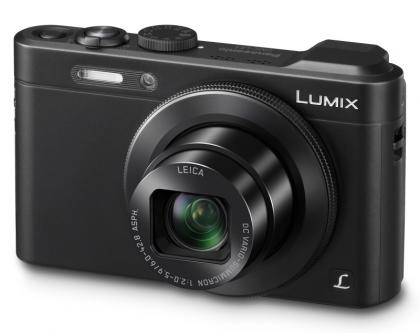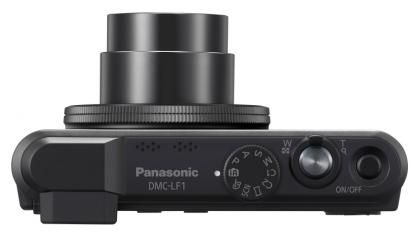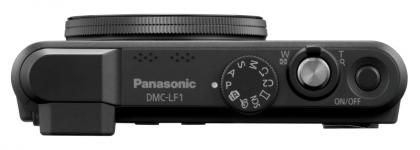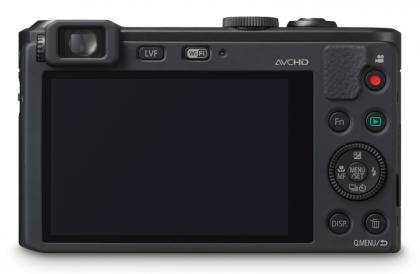The Panasonic Lumix DMC-LX7 was our favourite compact camera of 2012, with a long list of talents including exceptional photo and video quality, lightning fast performance and lots of physical controls.

The LF1 is best seen as a sister product to the LX7. It costs roughly the same, and it uses the same-sized 1/1.7in sensor. That's roughly twice the surface area of the 1/2.3in sensors in most compact cameras, which bodes well for image quality, especially in low light.
As with the LX7, the LF1 receives a further boost to low-light shooting from its wide-aperture lens. Its f/2 aperture at the wide-angle end of the zoom captures roughly three times as much light as a f/3.5 lens in a typical compact camera. The benefit tapers off at the long end of the zoom, though, with an unremarkable f/5.9 aperture. The LX7 excels throughout its zoom range, with a f/1.4-2.3 lens that's twice as bright as the LF1 for wide-angle shots, and over six times as bright when zoomed in.
The LF1 compensates with a bigger zoom range. While the LX7 has a relatively modest 24-90mm (equivalent) focal length range, the LF1 stretches from 28 to 200mm. So while the LX7 has the advantage in low light, the LF1 copes better with distant subjects.

The LF1 is also significantly slimmer. When powered down, the LX7 measures 50mm from its lens cap to its LCD screen, so it'll only fit in big pockets. The LF1 has a convenient integrated lens cap, and measures just 28mm from lens to screen. The electronic viewfinder protrudes a further 4mm; it's a feature that's only available as an expensive optional extra on the LX7. The LF1's viewfinder isn't much to get excited about, though. It's small, dim and lacking in detail with its 200,000-dot resolution, and the small eyepiece doesn't cut out ambient light.

There's no room on the top plate for a hotshoe, but there is a mode dial, a wheel on the back for adjusting settings and a lens ring that can be assigned to a variety of tasks including zoom, exposure compensation and white balance. In PASM (Program, Aperture-priority, Shutter-priority and Manual) shooting modes, the rear wheel and lens ring adjust exposure settings by default, with direct access to both shutter speed and aperture in manual exposure mode. In program mode, they provide direct access to ISO speed – a nice idea, except that we sometimes accidentally jumped from Auto ISO to ISO 12800, resulting in hopelessly blotchy photos. Otherwise, the controls are a success, with the Fn button assigned to the autofocus point and the Q.Menu button providing quick access to other key features.

The LF1 is almost as fast as the LX7. We measured 0.8 seconds between shots in normal use. Continuous shooting is at 10fps for 10 frames, or 5fps with continuous autofocus. The latter lasted for 35 JPEGs or eight raw frames before slowing to the speed of the card. This kind of performance compares well with SLRs, and is a huge advantage for people who like to capture a string of photos and choose the best later.
One advantage over the LX7 is built-in Wi-Fi, and Panasonic's implementation is among the most comprehensive around. There's remote shooting from an iOS and Android app with complete control over settings. The app also includes elegant photo browsing and transfers, and photos can be sent across a home network to various other destinations including PCs, TVs and social media sites.











